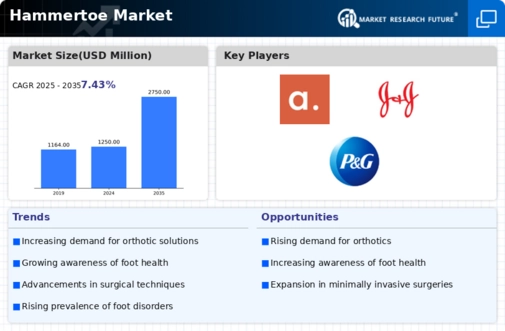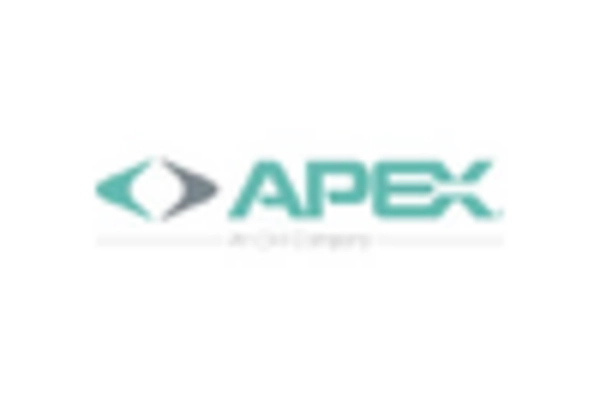Growing Geriatric Population
The expansion of the geriatric population is a significant driver in the Hammertoe Market. As life expectancy increases, the number of older adults susceptible to foot deformities, including hammertoe, is on the rise. This demographic shift necessitates a greater focus on foot health and related treatments. Data suggests that the elderly are more likely to experience complications from hammertoe, leading to increased healthcare utilization. Consequently, healthcare providers are likely to enhance their offerings to cater to this demographic, including specialized services and products designed for older adults. The Hammertoe Market must adapt to these changing needs, ensuring that effective treatment options are accessible to the aging population.
Increased Focus on Preventive Care
The emphasis on preventive care is becoming increasingly prominent within the Hammertoe Market. Healthcare professionals are advocating for early intervention strategies to mitigate the progression of hammertoe conditions. Educational campaigns aimed at raising awareness about foot health and proper footwear choices are gaining traction. This proactive approach not only helps in reducing the incidence of hammertoe but also encourages individuals to seek timely treatment. As a result, the market is witnessing a shift towards preventive measures, which could lead to a decrease in severe cases requiring surgical intervention. The Hammertoe Market stands to benefit from this trend as it aligns with broader healthcare goals of promoting wellness and reducing long-term healthcare costs.
Technological Innovations in Treatment
Technological advancements play a crucial role in shaping the Hammertoe Market. Innovations such as minimally invasive surgical techniques and advanced orthotic devices are transforming treatment options. For instance, the introduction of 3D printing technology allows for the customization of orthotic solutions tailored to individual patient needs. This not only enhances patient comfort but also improves treatment outcomes. Furthermore, the integration of telemedicine facilitates remote consultations, enabling patients to access specialized care without geographical constraints. As these technologies continue to evolve, they are expected to drive growth in the Hammertoe Market, attracting both patients and healthcare providers seeking effective and efficient treatment alternatives.
Increasing Prevalence of Hammertoe Conditions
The rising incidence of hammertoe conditions is a notable driver in the Hammertoe Market. Factors such as aging populations and lifestyle choices contribute to this trend. According to recent data, approximately 20% of adults over the age of 65 experience some form of hammertoe. This demographic shift suggests a growing need for effective treatment options, thereby expanding the market. Additionally, the prevalence of diabetes and obesity, which are known risk factors for foot deformities, further exacerbates the situation. As more individuals seek medical attention for foot-related issues, the demand for specialized products and services within the Hammertoe Market is likely to increase, prompting healthcare providers to focus on innovative solutions.
Rising Demand for Non-Surgical Treatment Options
The increasing preference for non-surgical treatment options is significantly influencing the Hammertoe Market. Many patients are hesitant to undergo surgery due to associated risks and recovery times. Consequently, there is a growing interest in conservative management strategies, such as physical therapy, orthotic devices, and pain management solutions. Market data indicates that non-surgical treatments account for a substantial share of the overall market, reflecting a shift in patient attitudes towards less invasive options. This trend is likely to continue as more individuals seek to manage their hammertoe conditions effectively while minimizing disruption to their daily lives. The Hammertoe Market must adapt to this demand by offering a diverse range of non-invasive solutions.

















Leave a Comment